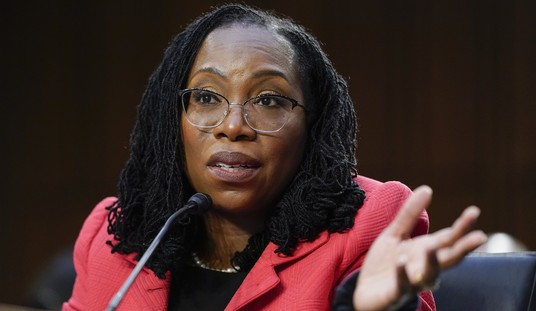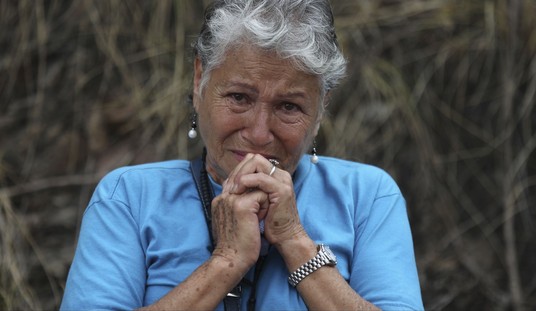Observers from astute political junkies to sideline neophytes may recall Sarah Palin’s enthusiastic May 2010 endorsement of California’s Grand Old Party Senate nominee Carly Fiorina. The event was just one of many aspects of the race and politics in a state thought to be the most dysfunctional in the nation.
The face-off between three term incumbent Democrat Barbara Boxer and the former Hewlett Packard chief executive officer hits a government-funded California theater near you on November 2.
Long before Palin’s endorsement, Fiorina was seen as the far less purist-conservative candidate in the tea party age. The endorsement went directly against the grassroots current for Assemblyman Chuck DeVore, the failed primary candidate. Many DeVore fans and tea party activists expressed their dissatisfaction with Palin’s Fiorina-boost.
But something beyond boiled-over tea party activist discontent was brewing.
Palin’s endorsement motive was dubbed “feminist over tea partier.” This introduced a new dynamic into the race — an extension of Palin’s pink-elephant effort to mobilize the election success of conservative women across America. Riding the tea party wave, Palin sought challengers to the traditional liberal female office seeker.
The “mama grizzly” movement is based on the female nurturing/caring instinct and matronly fear for the future of America. From local Republican office victories to the notable primary wins of Sharron Angle in Nevada and Nikki Haley in South Carolina, mama grizzly roared east and west of the Rockies.
Many may find the mama grizzly phenomenon to be a new ideological facet of gender politics in California, but the state is not new to the feminist electoral role. California Senators Barbara Boxer and Dianne Feinstein ran for Congress’s higher chamber for the first time in 1992. That year was dubbed the “year of the woman,” and Boxer and Feinstein became California’s first two female senators elected, also joining three female senatorial winners nationwide.
In 1896, Californians overwhelmingly voted against women’s suffrage. Ironically, according to Taming the Elephant: Politics, Government and Law in Pioneer California by John F. Burns and Richard J. Orsi, the key deciding voting districts were none other than today’s progressive strongholds — San Francisco and Oakland.
Men of that day voted nay on the basis that allowing women into the voting booth would also have ushered in alcohol prohibition in the state. It’s interesting to think that Palin-era mama grizzlies are unified in motherly instincts, whereas the turn-of-the-century female figures desired voting rights to keep men away from booze.
For a bird’s-eye-view of the California Senate race action, I set out on foot in my hometown of Carlsbad, California.
Coastal Carlsbad is a picturesque, dreamy resort town home to a mosaic of people from many walks of life. Urban, affluent, and beachy, the area (as part of San Diego County) went a solid 53% to Democratic presidential nominee Barack Obama in the 2008.
Knowing the latter as I set out, I considered a central theme in the Boxer/Fiorina race. What are the odds that Fiorina, a Republican, could win in such a deeply entrenched Democrat state? And what is the extent of the Palin gentle shade of purple, the mama grizzly factor, in the race?
“I’m not quite sure what I think of Carly Fiorina. I saw the debate and frankly am not impressed with either of the candidates,” said Carrie, a coastal San Diego resident. “I watched most of the debate recently and thought that they both dodged the questions and seemed too much like politicians.”
I asked Carrie what she thought of the Palin endorsement of Fiorina.
“It doesn’t matter either way to me,” she said.
“Who are you going to vote for?” I asked.
“Carly Fiorina,” she shrugged, matter-of-factly, and perhaps, a bit unconvincingly.
Carrie is a common face in California’s electoral scene — a self-described (and registered) independent and former Democrat. Her enthusiasm gap for Democrats is directly attributed to debt and corruption in the state. Or as some locals would say, the “highest taxes paid for the worst services in the nation.”
Recent polling of likely voters shows that Carrie belongs to the “other” side of the electoral ledger — the nearly 25% of likely voters registered as independent — or other than — Republican or Democrat. Nevertheless, Democrats carry a significant lead over other voter IDs, clocking in at 44.5% of registered voters. The GOP trails far behind at 20% of those registered.
Proving the latter, a nearby neighbor related to me just how tough any GOP candidate will have a go of it.
“If I had a third candidate, I might consider an option. But, I’m voting for Barbara Boxer in November,” said Glenda of Carlsbad.
Glenda, in her late 60s, told me that she chaired a League of Women Voters chapter in the northeastern United States “years back” and is none-too-impressed with Carly Fiorina. “She’s not likeable and the negative television ads from her are a real turnoff,” she said. Glenda didn’t hold Barbara Boxer in high esteem either, but noted that “she (Boxer) was the candidate and I am a liberal Democrat.”
I asked her what impact the Palin endorsement of Fiorina had on her outlook of the Republican candidate.
She didn’t hold back: “Sarah Palin would have sent me over the edge if I had been considering Carly Fiorina.”
Of course, Glenda related “over the edge” in a less-than-positive fashion.
Glenda is a lovely lady, but representative of the uphill battle that any Republican Senate candidate will face in this state. On one hand, the Palin factor played little to no factor in her choice. On the other hand, she had most likely made up her mind already.
It’s essentially the “I hate my candidate but she’s the best this time around” dynamic.
In the coastal, resort-laden “Old Carlsbad” district I decided to push my PJM press credentials a bit harder. I came across a younger lady who seemingly was enjoying her vacation. I say “seemingly” because she wanted nothing of my bothering, pen-and-pad query. The reaction didn’t phase; in her shoes, I may have done the same.
I approached a younger lady in her 20s who didn’t know enough about the race to offer up much of an interview. She told me that she lived nearby and “knew about Barbara Boxer” but didn’t know who she was running against. She “would vote for Boxer because she was pro-choice” but wasn’t sure that she would vote anyway.
She was no fan of Palin either. “She sounds like an idiot and is frightening,” she said.
Then I found Sarah.
Fifty years old and visiting the beach for the day from Riverside, California, Sarah introduced an interesting dichotomy — a blend of Christian right conservatism and tea party tenets. Active in her church and having attended “a couple” tea party events, Sarah was my perfect catch of the day.
“I’m impressed with Carly Fiorina; she started as a secretary at her company and worked her way up,” she offered. “Tremendous business background.”
It wasn’t until I mentioned Barbara Boxer that I drew a sharp reaction from the Riverside resident.
“Everything about Barbara Boxer offends me as a woman,” Sarah exclaimed. “She hasn’t done the hardworking people of California any favors — she’s one of the worst in Congress.”
It was obvious that Sarah, from Riverside, was Fiorina country.
She drew on the partial-birth abortion ban Boxer voted against as a large component of her anger. I pressed her a bit, asking, “Would your vote for Fiorina be an anti-Boxer statement?” And: “Are you more or less inclined to vote for Fiorina because Sarah Palin endorsed her?”
“Yes, it would be a vote against Boxer and yes, when I heard on the news that Palin had come out for Fiorina, it made me more inclined to vote for her. Boxer has been in office for far too long.”
I thought it noteworthy that Sarah initialized her responses with essential tea party points. It wasn’t until I pushed a bit that she brought up traditional social issues. Also, the Palin factor played a positive role.
Democratic voters like Glenda may be less motivated to show up at voting booths in November. The independent Carries of the state perhaps will be a bit more determined. It’s obvious that the Sarahs of the state hold the lion’s share of the enthusiasm gap.
The question then is this: how much difference will all of these factors make in cobalt blue California?
Stay tuned.









Join the conversation as a VIP Member